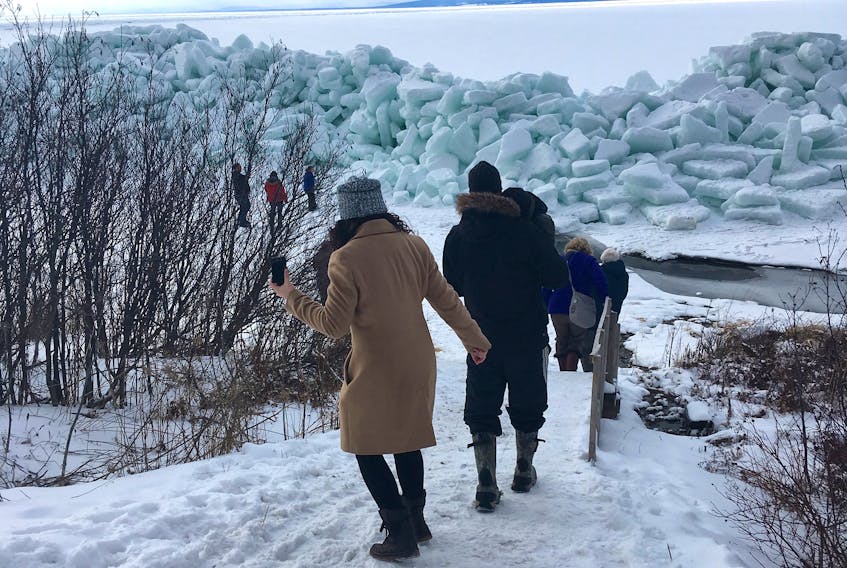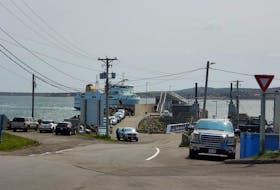IRISH VALE, N.S. — A Cape Breton ice wall that could have drawn the envy of U.S. President Donald Trump is topping this year’s list of strange weather occurrences.
Thousands of visitors flocked to metres-high ice piles on the Bras d’Or shoreline during the months of February and March 2019.
“It really was something,” recalled Cindy Day, chief meteorologist for the SaltWire Network.

“We had a lot of cold weather followed by a thaw and then very persistent, prevailing winds that broke up the ice and kept pushing the ice along the shoreline.”
Repeated weather systems positioned in such a way that brought single directional winds are what caused ice chunks to stack in Irish Vale.
Day said this happened on Bras d’Or, also referred to as Canada’s inland sea, because of the lake’s size and where it sits in the middle of the island.
The ice wall may never pile up the same way again, but never say never, said Day.
“Will we have the perfect cold, then thaw conditions? It’s pretty hard to say. It really was quite an anomaly and perhaps moving forward we’ll see that more often,” she said.
Known as an ice shove — or informally, an ice tsunami — the ice wall eventually drew a safety warning from RCMP after observers started climbing up the slippery slopes to snap photographs.
Day said that she’s not surprised to hear many newspapers select hurricane Dorian as their weather-maker of the 2019 year.
“In terms of weather impact in Atlantic Canada it was significant, I think it was chosen also based on the fact that the storm itself — not just when it moved into Canadian waters — was such an unusual storm,” she said.
“It was one of the most powerful storms ever in the Atlantic basin.
Day said all eyes were on hurricane Dorian, which later transitioned from a Category 5 to an extratropical storm upon landfall in Nova Scotia.
Precipitation was spread across the province, with some areas reporting between 100 and 200 millimetres of rainfall.
Day said in the last few years Atlantic Canadian storm systems have intensified by bringing strong, sustained winds — similar to what was experienced in Cape Breton this week.
"It has been an extremely windy, six- to eight-month period across Cape Breton — all of Atlantic Canada, in fact," said Day.
“If you look at the data that we have in hand, it goes back 30 years, but we’re set to start a new 10-year period to factor into those numbers. The numbers we have right now don’t show an increase in wind speed, but I think in 2021 when the numbers are recalculated adding the new decade I think we’re going to see a pretty significant increase in wind speed."
Another trend of 2019 for Cape Breton was fewer rain days, but with heavier rainfall per episode.
But the biggest story year this year is what Day described as a climate awakening.
“I think people in the past year have really stopped to re-think what we’re doing to the planet and maybe Greta (Thunberg) has a lot to do with that. She has people around the world taking note."
Add-in statistics showing Canada is warming twice as fast as the rest of world and Day said that’s reason enough to select the make climate as her No. 1 weather story for 2019.
RELATED:









